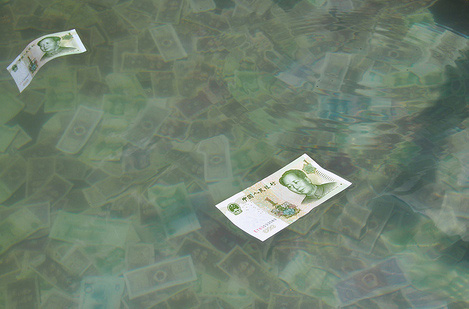In the 1970s it was Germany. In the 1980s it was Japan. Now, apparently, it is China that is responsible for U.S. economic woes.
Appearing before Congress, U.S. Treasury Secretary Geithner pointed the finger at China, accusing them of currency manipulation. Congress has called upon the president to bring in tariffs aimed at reducing Chinese manufacturing exports. The presidential report specifying “Section 301” measures is expected in November.
Liberal economist and New York Times columnist Paul Krugman opines that by not allowing its currency to appreciate, China is refusing to play by the same rules as everybody else.
Krugman forgets that the U.S. is the reserve currency country that does not have to follow the same rules as everybody else. When countries other than the U.S. run international payments deficits, they have to ante up U.S. dollars. The U.S. just prints more money.
Thanks to the printing press, U.S. overspending has created a set of global imbalances in international payments. China may sell (export) goods, but it is the U.S. that buys (imports). The annual imbalance is about $250 billion U.S. in favor of China. China buys American treasury bills with its surplus dollars making it a net lender to the U.S. of about $U.S. 2.7 trillion to date. In other words, the Chinese lend money back to the U.S. so that Americans can continue to over-spend.
What the Americans see as a trade problem is more properly a difference over the role of markets in setting foreign exchange rates. Market trading in currencies far overshadows international trade in goods. On any given day, somewhere around $ 3 trillion (U.S.) worth of currency transactions take place. This compares to the total value of world trade in one year of about $13 trillion.
The currency trade is all about making money from betting on currency shifts. Currencies move when interest rates change. Raising interest rates attracts buyers, lowering them attracts sellers.
China refuses to allow its currency to float against the U.S. dollar. Rather China prefers to keep the value of the Yuan stable in relation to the U.S. dollar. Currency speculators would love to be able to bet on a rising Yuan.
The U.S. Federal Reserve is about to undertake QE 2 (Quantitative Easing 2), a planned expansion of credit by one trillion dollars, that comes on top of QE 1, an expansion of $2 trillion to deal with the crisis of 2008-09.
QE 2 will see the Fed buying U.S. bonds. As a result the Fed expects interest rates to drop, making the U.S. dollar less attractive. The mere announcement of an intended QE 2 in September, sent the U.S. dollar markedly lower in currency trading. The Canadian dollar, the Australian dollar, and the Swiss France are now trading at par with the U.S. dollar. Countries like China, that maintain stable exchange rates, thwart the intent of the U.S. action, which is designed to devalue the U.S. currency, promoting exports and limiting imports.
The competitive devaluation orchestrated by the U.S. has consequences for all its trading partners. In essence, the U.S. is manipulating its own currency, while accusing China of doing the same.
The U.S. dollar is both the centre piece of the world financial system, and the national currency of a country with a stagnating economy, which is losing manufacturing capacity and well-paying jobs. One role gets in the way of the other. When faced with a choice between acting on its own behalf, or helping out the world financial system, the U.S. does not hesitate. It looks to itself.
Recognizing this, a series of countries, most prominently Russia, France, and China, have been proposing the replacement of the U.S. dollar as the world currency, with a new international monetary unit modeled on the existing IMF Special Drawing Rights. This goes strangely unreported in the U.S except by Project Censored.
In the 1970s, U.S. actions against Germany and other Western European countries blamed for running strong surpluses were a contributing factor to the creation of the European Monetary System, the forerunner to the Euro, and now a competing reserve currency to the U.S. dollar.
In the 1980s, Japan caved in to U.S. demands to liberalize its foreign exchange market, and allow the Yen to move upwards. The Chinese are very aware that one of the consequences was to slow a very fast growing economy, and then usher in a long period of Japanese deflation that has yet to end.
In preparing their next five-year economic plan, it is doubtful China will include provisions for freely floating their currency in order to satisfy the Americans. Such an approach would make putting the plan into operation impossible, and would makes no sense.
Market liberalism of foreign exchange markets had been a boon to speculators, and contributed greatly to what Kari Polanyi Levitt in her John Kenneth Galbraith lecture called “The Great Financialization” of the world economy. Fixed and managed exchange rates make more sense than floating rates, but try telling that to American bankers who dominate the currency trade, and are not about to abandon their super lucrative activities. It is much easier to bash China.
Duncan Cameron writes weekly on politics and is president of rabble.ca.



